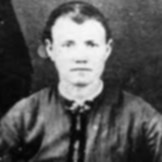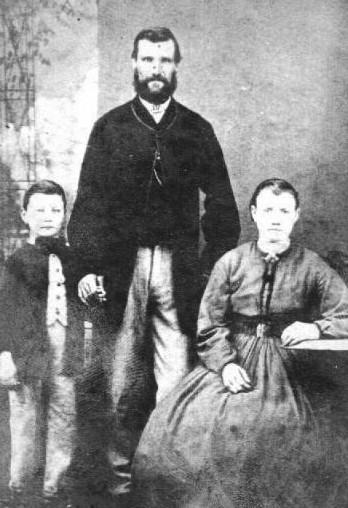
1848 - 1873
Elizabeth Lillian Woolcock
Summary
Name:
Years Active:
1873Birth:
April 20, 1848Status:
ExecutedClass:
MurdererVictims:
1Method:
PoisoningDeath:
December 30, 1873Nationality:
Australia
1848 - 1873
Elizabeth Lillian Woolcock
Summary: Murderer
Name:
Elizabeth Lillian WoolcockStatus:
ExecutedVictims:
1Method:
PoisoningNationality:
AustraliaBirth:
April 20, 1848Death:
December 30, 1873Years Active:
1873bio
Elizabeth Lillian Woolcock was born on April 20, 1848, in Burra Burra, South Australia. She grew up in a family that faced many challenges. In January 1852, her father joined the Victorian gold rush, which prompted the family to move to Ballarat. They lived in a tent on the goldfields. When Elizabeth was just four years old, her mother relocated to Adelaide, leaving Elizabeth to live with her father.
Elizabeth's childhood was marked by trauma. At the age of seven, she was raped by an itinerant Indian and left for dead. This experience deeply affected her. When she was nine, her father passed away from consumption, leaving her without both parents at a young age.
In 1865, Elizabeth received news that her mother was alive and looking for her. She traveled to Moonta, South Australia, where she moved in with her mother and her stepfather. There, Elizabeth engaged in community life, teaching Sunday school at the Wesleyan Church.
Elizabeth's life took another turn when she began working as a housekeeper for Thomas Woolcock, a widower who had emigrated from Cornwall. Thomas had two children, and his first wife had died the year before Elizabeth arrived. Elizabeth's stepfather disapproved of her relationship with Thomas, leading to conflict. Despite the challenges, Elizabeth and Thomas married on October 2, 1867, after a brief courtship.
However, their marriage was difficult. Thomas became a heavy drinker and abusive towards Elizabeth. Despite her attempts to leave him, he would always bring her back. Elizabeth struggled with depression and even attempted suicide during this unhappy period. She sought help for her insomnia and melancholy but grew increasingly reliant on morphine.
murder story
Thomas Woolcock died in the early morning of September 4, 1873. His wife, Elizabeth Woolcock, had called in several doctors over the weeks leading up to his death due to his stomach pains and nausea. Dr. Bull, one of the doctors, prescribed medicine that contained mercury, which worsened Woolcock's condition. After worsening symptoms, Elizabeth consulted Dr. Dickie, who thought Woolcock had a gastric disorder. Woolcock's health did not improve, leading Elizabeth to suggest returning to Dr. Bull. However, Woolcock expressed his dislike for Dr. Bull's treatment.

Following his death, Dr. Dickie stated that Woolcock had died from exhaustion due to severe vomiting and purging. A cousin of Woolcock suggested to the doctor that Elizabeth might have poisoned him, which started rumors of foul play. An inquest was held, during which doctors testified about Woolcock's medications, and an autopsy was performed in the home.
During the inquest, evidence pointed towards mercury poisoning. Woolcock's body was examined, and Dr. Dickie indicated that mercury poisoning was a strong possibility. Meanwhile, police revealed they had found traces of mercury in the Woolcocks' dead dog, which had also died under suspicious circumstances. Several jars of suspected poison were located in their cottage. The jury concluded that Woolcock had been poisoned, leading to Elizabeth's arrest.
Elizabeth pleaded not guilty at the trial, which attracted significant public attention. She had an inexperienced lawyer who struggled against the skilled Crown Solicitor. The prosecution suggested that Elizabeth had poisoned the dog as part of an experiment and that she had an affair with a boarder, which provided her with motive. Defendants at that time could not testify on their own behalf, so Elizabeth could not address these claims in court. After a quick deliberation, the jury found her guilty of murder and recommended mercy due to her youth, but her plea for mercy was ultimately denied.
On December 30, 1873, Elizabeth Woolcock was executed by hanging. Before her execution, she gave a letter to her minister, Reverend James Bickford, to be opened after her death. In the letter, she expressed her thoughts on her life and her faith, making several errors and showing confusion in her writing.